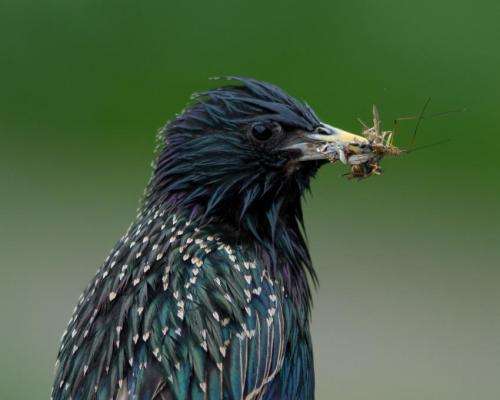'Bee-harming' pesticides also hit bird populations, study reports

Already suspected of killing bees, so-called "neonic" pesticides also affect bird populations, possibly by eliminating the insects they feed upon, a Dutch study said on Wednesday.
The new paper comes weeks after an international panel of 29 experts found that birds, butterflies, worms and fish were being harmed by neonicotinoid insecticides, although details of this impact were sketchy.
Studying areas of the Netherlands where surface water had high concentrations of one such chemical, imidacloprid, it found that the population of 15 bird species tumbled by 3.5 percent annually compared to places where the pesticide's level was far lower.
The fall, monitored from 2003 to 2010, coincided with rising use of imidacloprid, noted the study led by Caspar Hallmann of Radboud University in Nijmegen.
Authorised in the Netherlands in 1994, annual use of this neonicotinoid increased more than ninefold by 2004, according to official figures. Much of the chemical was found to have been sprayed at excessive concentrations.
By wiping out insects—a crucial source of food at breeding times—it affected the birds' ability to reproduce, the authors suggested, cautioning that other causes could not be ruled out.
Nine of the 15 bird species monitored are exclusively insectivore.
"Our results suggest that the impact of neonicotinoids on the natural environment is even more substantial than has been reported in the past," declared the probe, published in the journal Nature.
"Future legislation should take into account the potential cascading effects of neonicotinoids on ecosystems."
Neonics are widely-used as a seed treatment for arable crops. They are designed to be absorbed by the growing seedling and be toxic for the nervous system of crop-munching pests.
In a commentary carried by Nature, Dave Goulson, a biologist at Britain's Sussex University, said neonicotinoids may well have a long-term impact on insect populations.
Only about five percent of the pesticide's active ingredient is actually absorbed by the crop, he said.
Most of the rest enters the soil and soil water, where it can persist for months and even years—it can take more than 1,000 days for concentrations to fall by half.
Accumulative
As a result, the chemicals build up over time if fields are sprayed seasonally or annually, he said.
The chemical may also be taken up by the roots of hedgerows and follow-on crops, and be washed from soils into lakes, canals and rivers, where it could affect aquatic insects, a food for birds and fish, Goulson said.
He saw a similar knock-on process to that of DDT, a notorious pesticide whose environmental damage came to the fore in 1962 thanks to Rachel Carson's investigation "Silent Spring."
The debate over neonics has raged since the late 1990s, when French beekeepers blamed them for the collapse of honeybee colonies.
In 2013, the European Food Safety Authority (EFSA) declared that neonic pesticides posed an "unacceptable risk" to bees.
This was followed by a vote by the European Union in favour of a two-year moratorium on the use of three widely used neonic chemicals on flowering crops, which are visited by bees.
But the measure does not affect barley and wheat, nor does it cover pesticides used in gardens or public areas.
Last month, the White House ordered the US Environmental Protection Agency (EPA) to carry out its own review of the effect of neonicotinoids on bees.
More information: Declines in insectivorous birds are associated with high neonicotinoid concentrations, dx.doi.org/10.1038/nature13531
Journal information: Nature
© 2014 AFP




















